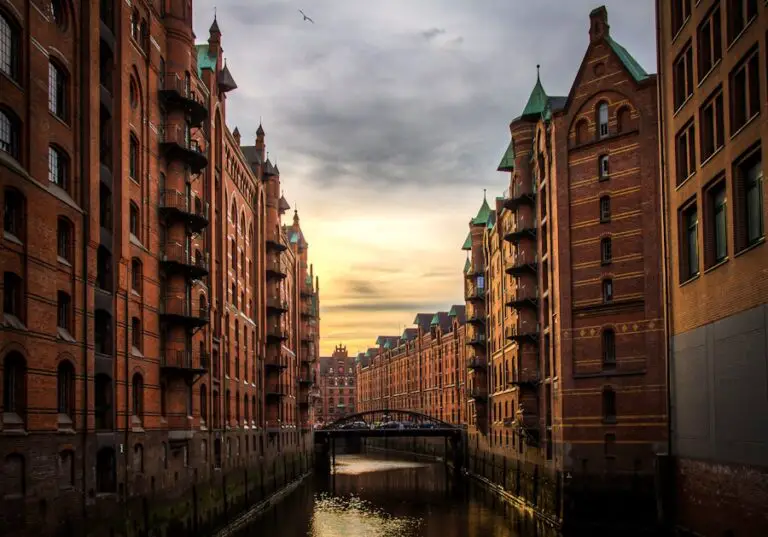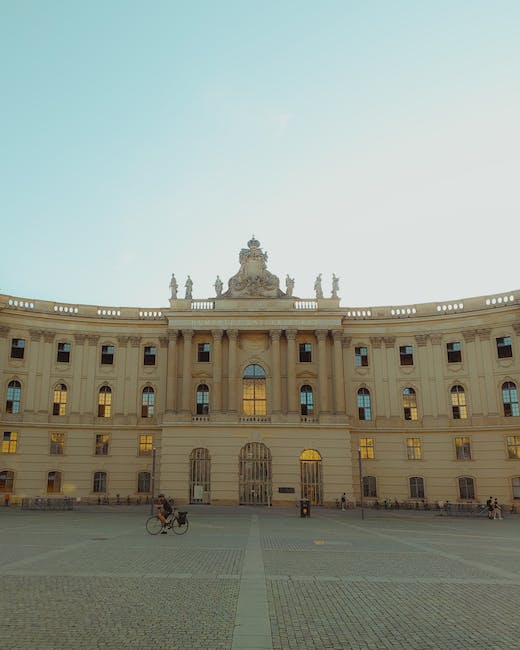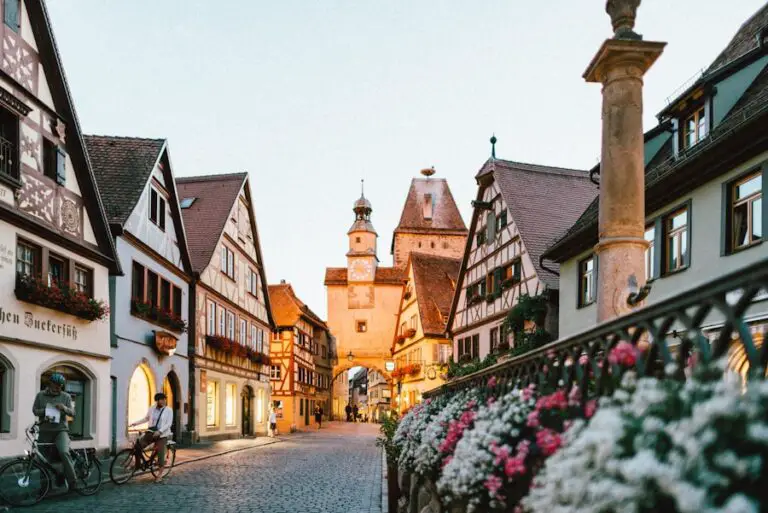Explore Dresden’s Hidden Gems: Top Free Attractions You Won\’t Want to Miss
Introduction: Discovering Dresden’s Hidden Gems
Dresden, the capital city of the German state of Saxony, is known for its rich history and cultural heritage. From its stunning architecture to its world-class museums, Dresden offers a wealth of attractions for visitors to explore. While iconic landmarks like the Semper Opera House and the Dresden Castle are well-known, there are also many lesser-known gems that are worth discovering. In this article, we will take a closer look at some of these hidden treasures and provide tips for making the most of your visit to Dresden.
One of Dresden’s most iconic landmarks, the Zwinger Palace is a masterpiece of Baroque architecture. Built in the early 18th century, the palace was originally intended as an orangery and pleasure ground for the royal court. Today, it houses several museums and exhibitions that showcase Dresden’s rich cultural heritage.
The palace’s architecture is truly breathtaking, with its ornate facades, grand courtyards, and beautiful gardens. Inside, visitors can explore the Old Masters Picture Gallery, which houses an impressive collection of European paintings from the 15th to the 18th centuries. The Porcelain Collection is also worth a visit, with its extensive display of Meissen porcelain.
When visiting the Zwinger Palace, it is recommended to arrive early in the morning to avoid crowds. The palace can get quite busy, especially during peak tourist season. It is also advisable to purchase tickets in advance to skip the line and save time. Finally, don’t forget to take some time to explore the palace’s beautiful gardens, which offer a peaceful retreat from the hustle and bustle of the city.
The Green Vault: A Treasure Trove of Art and History
Located within the walls of the Royal Palace, the Green Vault is one of Dresden’s most unique museums. It is home to an extensive collection of art and historical artifacts, including precious gemstones, gold and silver objects, and intricate works of art.
The museum is divided into two parts: the Historic Green Vault and the New Green Vault. The Historic Green Vault showcases the treasures of the Saxon kings, including the famous Green Diamond and the Golden Coffee Service. The New Green Vault, on the other hand, features a more modern collection, with highlights such as the Court of the Great Mogul and the Ivory Room.
To make the most of your visit to the Green Vault, it is recommended to book a guided tour. The museum can be quite overwhelming due to the sheer number of objects on display, and a knowledgeable guide can help provide context and insight into the collection. Additionally, be sure to check the museum’s website for any special exhibitions or events that may be taking place during your visit.
The Dresden Frauenkirche: A Symbol of Resilience
The Dresden Frauenkirche, or Church of Our Lady, is not only a beautiful architectural masterpiece but also a symbol of resilience. Built in the 18th century, the church was destroyed during World War II and lay in ruins for decades. It was painstakingly reconstructed in the 1990s using original materials and techniques, and today stands as a testament to Dresden’s ability to rise from the ashes.
Visiting the Frauenkirche is a must for anyone interested in history and architecture. The church’s stunning dome is particularly impressive, offering panoramic views of Dresden’s skyline. Inside, visitors can admire the intricate stone carvings and beautiful stained glass windows.
To make the most of your visit to the Frauenkirche, consider taking a guided tour. Guides can provide valuable insights into the church’s history and significance, as well as point out interesting architectural details. It is also worth noting that entrance to the church is free, but donations are appreciated to help support ongoing restoration efforts.
The Royal Palace: A Window into Saxon Royalty
The Royal Palace, located in the heart of Dresden’s historic center, offers a fascinating glimpse into the lives of Saxon royalty. Built in the 16th century, the palace served as the residence of the Electors and Kings of Saxony for centuries. Today, it houses several museums and exhibitions that showcase the palace’s rich history and cultural heritage.
The palace’s architecture is a mix of different styles, reflecting its long history and various additions and renovations over the years. Highlights of the palace include the Historic Green Vault, which houses an extensive collection of art and historical artifacts, and the Turkish Chamber, which showcases Oriental art and objects.
When visiting the Royal Palace, it is recommended to allocate enough time to explore all of its museums and exhibitions. The palace can be quite large and it is easy to spend several hours wandering its halls. It is also worth noting that some areas of the palace may require separate tickets, so be sure to plan accordingly.
The Pillnitz Palace and Park: A Summer Retreat
Located on the outskirts of Dresden, the Pillnitz Palace and Park is a hidden gem that offers a peaceful retreat from the city. Built in the 18th century as a summer residence for the Saxon kings, the palace is surrounded by beautiful gardens and overlooks the Elbe River.
The palace’s architecture is a mix of different styles, including Baroque, Rococo, and Chinese influences. Inside, visitors can explore several rooms that have been preserved in their original state, including the Chinese Salon and the English Room. The palace also houses a museum that showcases its history and cultural significance.
One of the highlights of a visit to Pillnitz is exploring its expansive park. The park features several beautifully landscaped gardens, including an English Garden, an Italian Garden, and a Palm House. There are also several walking trails that offer stunning views of the river and the surrounding countryside.
To make the most of your visit to Pillnitz, consider taking a guided tour of the palace. Guides can provide valuable insights into its history and architecture, as well as point out interesting details that may be missed on a self-guided visit. It is also worth noting that the palace can get quite busy during peak tourist season, so it is advisable to arrive early in the morning or late in the afternoon to avoid crowds.
The Brühl Terrace: A Riverside Promenade
The Brühl Terrace, also known as the “Balcony of Europe,” is a historic promenade that offers stunning views of the Elbe River and Dresden’s skyline. Built in the 18th century, the terrace was originally part of the fortifications surrounding the city. Today, it is a popular spot for locals and tourists alike to relax and enjoy the views.
The terrace is lined with beautiful buildings and landmarks, including the Albertinum art museum and the Academy of Fine Arts. It is also home to several statues and monuments that commemorate important figures in Dresden’s history. One of the most notable landmarks on the terrace is the Augustusbrücke, a historic bridge that connects the old town with the Neustadt district.
To make the most of your visit to the Brühl Terrace, consider taking a leisurely stroll along its length. There are several benches and seating areas where you can sit and take in the views. It is also worth noting that there are several cafes and restaurants nearby where you can grab a bite to eat or enjoy a cup of coffee.
The Dresden Panometer: A 360-Degree View of the City
The Dresden Panometer is a unique attraction that offers visitors a 360-degree view of the city. Housed in a former gasometer, the panoramic exhibition takes visitors on a journey through time, showcasing different periods in Dresden’s history.
The exhibition features a large-scale panoramic painting that depicts Dresden as it appeared during a specific time period. The painting is accompanied by sound effects and lighting effects that help bring the scene to life. There are also several interactive displays and exhibits that provide additional information and context.
To make the most of your visit to the Dresden Panometer, consider taking your time to explore the exhibition. There is a lot to see and take in, so it is worth allocating at least a couple of hours for your visit. It is also worth noting that the exhibition can get quite busy, especially during peak tourist season, so it is advisable to arrive early in the morning or late in the afternoon to avoid crowds.
The Albertinum: A Modern Art Museum
The Albertinum is a modern art museum located on the Brühl Terrace in Dresden. Housed in a historic building that was originally built as an armory, the museum showcases a diverse collection of contemporary art, including paintings, sculptures, and installations.
The museum’s collection includes works by renowned artists such as Gerhard Richter, Georg Baselitz, and Max Ernst. It also features rotating exhibitions that highlight different themes and artistic movements. One of the highlights of the museum is its Sculpture Collection, which houses an extensive collection of sculptures from the 19th and 20th centuries.
When visiting the Albertinum, it is recommended to allocate enough time to explore all of its galleries and exhibitions. The museum can be quite large and it is easy to spend several hours wandering its halls. It is also worth noting that the museum offers guided tours and audio guides that provide additional information and insights into the artworks on display.
The Kunsthofpassage: A Quirky Artistic Enclave
The Kunsthofpassage is a hidden enclave in Dresden’s Neustadt district that is known for its quirky and artistic atmosphere. The passage is a collection of courtyards and buildings that have been transformed into a vibrant hub of creativity and expression.
Each courtyard in the Kunsthofpassage has its own unique theme and artistic style. From colorful murals to whimsical sculptures, there is something to see around every corner. The passage is also home to several shops, cafes, and galleries where you can browse and purchase unique handmade items.
To make the most of your visit to the Kunsthofpassage, consider taking your time to explore each courtyard and discover its hidden treasures. There are several walking tours available that provide insights into the history and significance of the passage, as well as point out interesting details that may be missed on a self-guided visit. It is also worth noting that the passage can get quite busy, especially on weekends, so it is advisable to visit during weekdays or early in the morning to avoid crowds.
Conclusion: Exploring Dresden’s Hidden Gems
Dresden is a city that is rich in history and cultural heritage, with a wealth of attractions for visitors to explore. While iconic landmarks like the Zwinger Palace and the Frauenkirche are well-known, there are also many hidden gems that are worth discovering. From the Green Vault’s treasure trove of art and history to the Pillnitz Palace’s summer retreat, there is something for everyone in Dresden.
Whether you are interested in architecture, art, or history, Dresden has something to offer. The city’s rich cultural heritage is evident in its stunning buildings and world-class museums. By taking the time to explore these hidden gems, you can gain a deeper understanding of Dresden’s past and present.
So next time you find yourself in Dresden, be sure to venture off the beaten path and discover these lesser-known treasures. You won’t be disappointed!
Do you have questions about Germany? then contact us by using our Contact Me page. Checkout more posts by us on our Blog.







